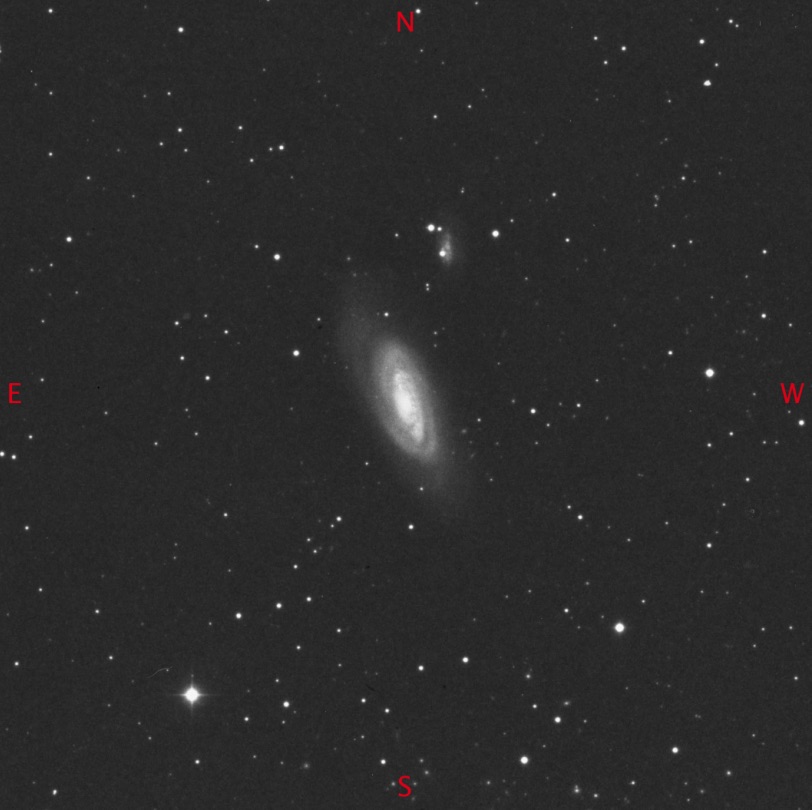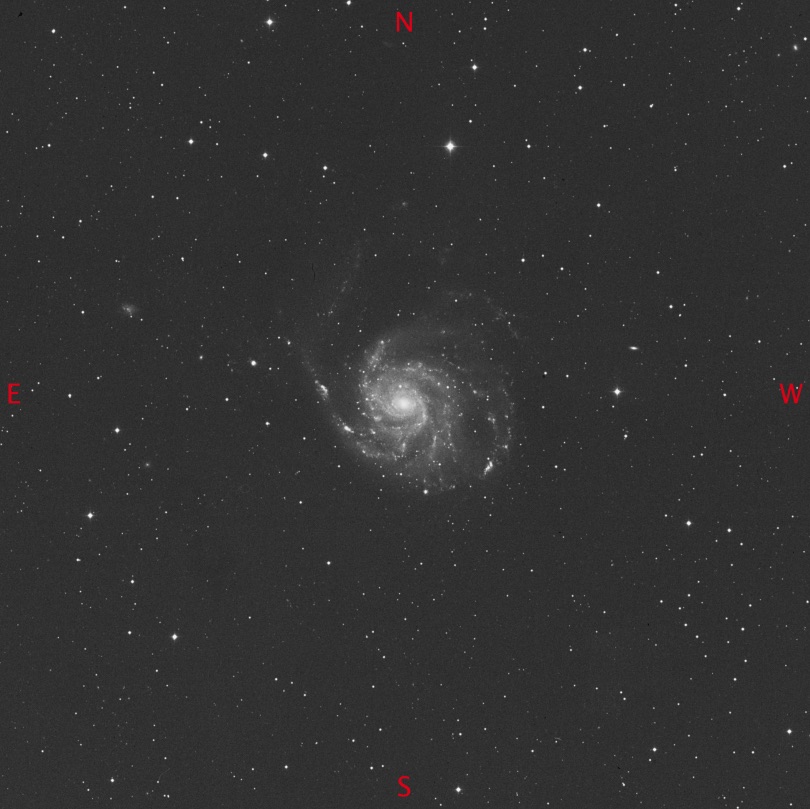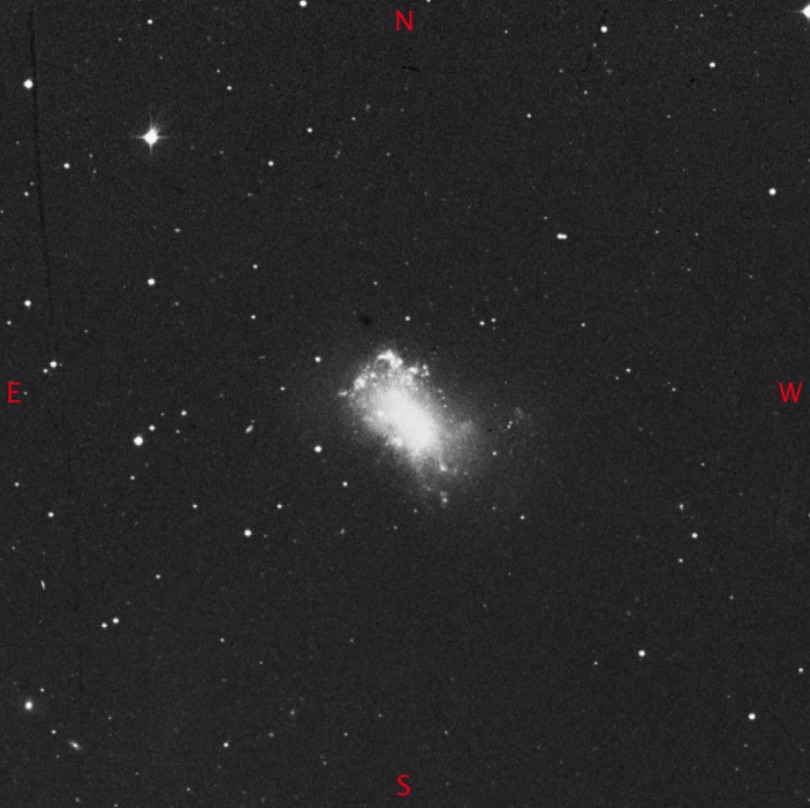Another long spell without cloud. Well that’s not exactly true, as there have been a few clear nights in batches. One forecasted and gave cloudless skies, but with a full moon and lots of high thin stuff, i didn’t even bother to venture out. The other a few weeks later didn’t look to bad, but with lots of early morning starts, I’ve not been able to stay awake long enough to do anything useful.
Session Data
- Date: 14/04/2015
- Time: 20:33 – 22:45 UT
- Seeing: I Perfectly Stable,
- Transparency: I Clear,
- Temp:10.0c, Air Pressure: 1010mb,
- Humidity: 66%,
- Dew Point: ?,
- Wind Speed: 4mph,
- SQM: 18.4 mags/arcsecond,
- NELM: 5.25mag
M3, NGC5272

In both scopes, West is to the 10 O’clock.
In the TMB 80 f/6, 26mm Plossl, 18 X, 2.8°, The Globular Cluster is easily picked out to the North of a bright 6.2 mag star.
Switching to the Altair Astro 250mm, 40mm Plossl, 51 X, 52′, The cluster is in the centre of three bright 8.2mag, 9.5mag and 10.4mag stars forming a triangle about halfway out from the centre of the FOV. The core is not resolvable in the 40mm.
In the Altair Astro 250mm, 14mm Delos, 145 X, 29.8′, The stars that make out the inner part of the cluster are now resolvable, with just the core stars being unresolved. The outer limits of the cluster give a diameter of about 10 arc secs.
in the Altair Astro 250mm, 10mm Delos, 203 X, 21.3′, The stars in the core are now all resolved. The body of the cluster seems to have a ring of stars around it – a little like a halo, but not as well defined than that. Looking more closely this ring is made up of half a dozen slightly brighter stars. The core sits slightly off centre to the South. As I look. I start to see three concentrations of stars forming tendrils . One to North and the other two each side of this. These are only seen with AV4. The one going off to the E seems to arc off towards the North as it goes, forming a U shape.
In the 10x60mm Finder, 26mm Plossl, 9 X, 6° the object is just visible and is held firmly with averted vision.
M90, NGC4569

Looks like I deleted the observing notes for this one.
All I can remember is that in the Altair Astro 250mm, 14mm Delos, 145 X, 29.8′, the view was poor and that I could just make out the orientation as being roughly N/S ish.
M51, NGC5194 and 5195

West is to 1 O’Clock.
In the TMB 80 f/6, 26mm Plossl, 18 X, 2.8°, M51 is easily seen and with averted vision its easy to see that it is made up of two separate objects.
Switching to the Altair Astro 250mm, 40mm Plossl, 51 X, 52′, There is a bright 7.0 mag star to the South. The two galaxies that make up M51 are aligned N/S. The larger of the two galaxies NGC5194 is about twice the size of the smaller NGC5195. The bridge between the two is not seen, but there appears to be a bias of stuff towards the Eastern edge of M51 suggesting something could be linking the two. However, I can say that in the 40mm, the bridge is not seen.
Switching the the Altair Astro 250mm, 14mm Delos, 145 X, 29.8′, The cores of both galaxies are now brightening up, with the core of NGC 5195 being tighter and brighter than that of its larger companion. The bias previously mentioned is now more pronounced. With AV4, you start to get a sense of a spiral structure in NGC5194 rotating in a clockwise direction and the Eastern spiral is more elongated towards NGC5195 and I would say it reaches about 75% of the way towards it. There is no no direct connection as I can still see a definite dark separation between the two galaxies.
Switching to the Altair Astro 250mm, 10mm Delos, 203 X, 21.3′, the cores of both galaxies seems to have the same brightness and the spiral structure seen heading towards NGC5194 has now dissapeard – too much eyepice methinks.
Switching back to the Altair Astro 250mm, 14mm Delos, 145 X, 29.8′, If I walk away from the eyepiece for a minute and return, my first view with direct vision, shows the bridge quite clearly. However, the more you stare at it, the less you seem to see…..weird.
M101, NGC5457

In the TMB 80 f/6, 26mm Plossl, 18 X, 2.8°, West is to the 1 O’Clock. The Galaxy is just visible with AV and is held with AV2, but no structure is seen.
Switching to the Altair Astro 250mm, 40mm Plossl, 51 X, 52′, A soft glow extends about 13 arc sec in diameter. Transparency is now deteriorating to a IV.
Looking more closely, there is a darker area in the N/W quadrant of the galaxy. This might explain a void between spiral arms, but I’m not seeing anything of those.
Switching to the Altair Astro 250mm, 14mm Delos, 145 X, 29.8′, I’m now getting a hint of stars embedded within the N/W quadrant. These measure 13.6 and 13.2 mag. The galaxy appears to be no larger than about 10arc min in diameter
C21, NGC4449

In the Altair Astro 250mm, 40mm Plossl, 51 X, 52′, West is to the 12 O’Clock.
The three brightest stars in the FOV are to the North, 9.4mag, 9.9mag and 10.8mag.
The galaxy is oriented S/W – N/E and is small and quite compact at about 5 arc sec in its longest dimension. Its width is about half that at about 2 arc secs.
Switching to the Altair Astro 250mm, 14mm Delos, 145 X, 29.8′, the orientation is very easy to make out now. The surface is mottled and iregular and the shape appears to be slightly triangular with the thicker end towards the N/E end. At the Northern end, is a star of 11.8 mag, which is only just visible.
Switching to the Altair Astro 250mm, 10mm Delos, 203 X, 21.3′, The Galaxy shows what appears to be a brighter core. The star chart confirms this to be a 7.3mag star. Really wierd as this doesn’t look stellar.
In the TMB 80 f/6, 26mm Plossl, 18 X, 2.8°, the galaxy is only just visible.